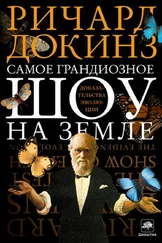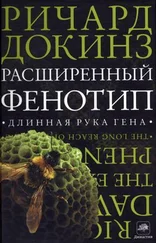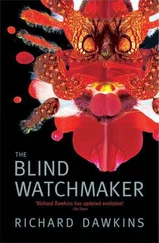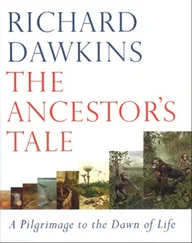[190] MAYR, E. (1985/1982) The Growth of Biological Thought. Harvard University Press, Harvard.
[191] MEDINA, M., COLLINS, A.G., SILBERMAN, J.D., & SOGIN, M.L. (2001) Evaluating hypotheses of basal animal phylogeny using complete sequences of large and small subunit rRNA. Proceedings of the National Academy of Sciences of the USA 98: 9707-9712.
[192] MENOTTI-RAYMOND, M. & O'BRIEN. S.J. (1993) Dating the genetic bottleneck of the African cheetah. Proceedings of the National Academy of Sciences of the USA 90:3172-3176.
[193] MiLius, S. (2000) Bdelloids: No sex for over 40 million years. Science News 157: 326.
[194] MILLER, G. (2000) The Mating Mind: How Sexual Choice Shaped the Evolution of Human Nature. Heinemann, London.
[195] MILLER, K. R. (1999) Finding Darwin's God: A Scientist's Search for Common Ground Between God and Evolution. Cliff Street Books (Harper Collins), New York.
[196] MILLER, K. R. (2004) The flagellum unspun: the collapse of ‘irreducible complexity'. In Debating Design: From Darwin to DNA (Ruse, M. & Dembski. W., eds.), Cambridge University Press, Cambridge.
[197] MILLS, D.R., PETERSON, R.L., & SPIEGELMAN.S. (1967) An extracellular Darwinian experiment with a self-duplicating nucleic acid molecule. Proceedings of the National Academy of Sciences of the USA 58: 217-224.
[198] MILNER, A.R. & SEQUEIRA, S.E.K. (1994) The temnospondyl amphibians from the Vis?an of East Kirkton. Transactions of the Royal Society of Edinburgh, Earth Sciences 84: 331-361.
[199] MIYA, M., TAKESHIMA, H., ENDO, H., et al (2003) Major patterns of higher teleostean phylogenies: A new perspective based on 100 complete mttochondrial DNA sequences. Molecular Phylogenetics and Evolution 26:121-138.
[200] MOLLON, J. D., BOWMAKER.J. K., & JACOBS. G. H. (1984) Variations of colour vision in a New World primate can be explained by polymorphism of retinal photopigments. Proceedings of the Royal Society of London: Series B 222: 373-399.
[201] MONOD, J. (1972) Chance and Necessity: Essay on the Natural Philosophy of Modern Biology. Collins, London.
[202] MONTGELARD. C. BENTZ. S., TIRARD. C. et al. (2002) Molecular systematics of Sciurognathi (Rodentia): The mitochondria! cytochrome b and 12S rRNA genes support the Anomaluroidea (Pedetidae and Anomaluridae). Molecular Phylogenetics and Evolution 22: 220-233.
[203] MOREIRA, D., LE GUYADER, H., & PHILIPPE.H. (2000)The origin of red algae and the evolution of chloroplasts. Nature 405: 32-33. [204] MORGAN, E. (1997) The Aquatic Ape Hypothesis. Souvenir Press, London.
[205] MURATA, Y., NIKAIDO. M., SASAKI.T., et al. (2003) Afrotherian phylogeny as inferred from complete mitochondrial genomes. Molecular Phylogenetto and Evolution 28: 253-260.
[206] MURDOCK, G. P. (1967) Ethnographic Atlas. University of Pittsburgh Press. Pittsburgh.
[207] MURPHY. W. J., EIZIRIK. E., O'BRIEN, S.J.,В«al. (2001) Resolution of the early placental mammal radiation using Bayesian phylogenetics. Science 294: 2348-2351.
[208] MUSSER. A.M. (2003) Review of the monotreme fossil record and comparison of palaeontological and molecular data. Comparative Biochemistry and Physiology Part A 136: 927-942.
[209] NELSON, J.S. (1994) Fishes of the World. John Wiley, New York. 3rd edn.
[210] NESSE. R.M.& WILLIAMS, G.C. (1994) The Science of Darwinian Medicine. Orion. London.
[211] NIKOH.N., IWABE, N., KuMA,K.-I.,etal. (1997) An estimate of divergence time of Parazoa and Eumetazoa and that of Cephalochordata and Vertebrata by aldolase and triose phosphate isomerase clocks. Journal of Molecular Evolution 45:97-106.
[212] NII.SSON, M. A., GULLBERG, A., SPOTORNO. A. E., et al. (2003) Radiation of extant marsupials after the K/T boundary: Evidence from complete mitochondrial genomes. Journal of Molecular Evolution S7:S3-S 12.
[213] NORMAN, D. (1991) Dinosaur! Boxtree, London.
[214] NOZAKE, H., MATSUZAKI, M., TAKAHARA, M., et at. (2003) The phylogenetic position of red algae revealed by multiple nuclear genes from mitochondria-containing eukaryotes and an alternative hypothesis on the origin of plastids. Journal of Molecular Evolution 56: 485-97.
[215] OHTA, T. (1992) The nearly neutral theory of molecular evolution. Annual Review of Ecology and Systematics 23: 263-286.
[216] OPARIN, A. I. (1938) The Origin of Life. Macmillan. New York.
[217] ORGEL, L. E. (1998) The origin of life- a review of facts and speculations. Trends in Biochemical Sciences 23: 491-495.
[218] PAGEL, M. & BODMER. W. (2003) A naked ape would have fewer parasites. Proceedings of the Royal Society of London: Biological Sciences fSuppl.) 270: S117-S119.
[219] PANCHEN. A. L. (2001) Etienne Geoffroy St.-Hilaire: Father of ‘evo-devo? Evolution and Development 3:41-46.
[220] PARKER, A. (2003) In the Blink of an Eye: The Cause of the Most Dramatic Event in the History of Life. Free Press. London.
[221] PARTRIDGE, T.C., GRANGER, D. E., CAFFEE, M.W., & CLARKE, R.J. (2003) Lower Pliocene hominid remains from Sterkfontein. Science 300: 607-612.
[222] PENPIELD, W. & RASMUSSEN.T. (1950) Vie Cerebral Cortex of Man: A Clinical Study of Localization of Function. Macmillan, New York.
[223] PERDECK, A. C. (1957) The isolating value of specific song patterns in two sibling species of grasshoppers. Behaviour 12:1-75.
[224] PETERSON, K.J. & EERNISSE, D.J. (2001) Animal phylogeny and the ancestry of bilaterians: Inferences from morphology and 18S rDNA gene sequences. Evolution and Developments: 170-205. {513}
[225] PETTIGREW.J.D., MANGER. P. R., & FINE. S. L.B. (1998) The sensory world of the platypus. Philosophical Transactions of the Royal Society of London: Biological Sciences 353: 1199-1210.
[226] PINKER, S. (1994) The Language Instinct: The New Science of language and Mind. Allen Lane, The Penguin Press, London.
[227] PINKER.S. (1997) How the Mind Works. Norton. New York.
[228] POUGH, F. H., ANDREWS, R. M., CADLE.J.E., & CRUMP, M. (2001) Herpctology. Prentice Hall, Upper Saddle River, NJ, 2nd edn.
[229] PULLMAN. P. (2001) His Dark Materials Trilogy. Scholastic Press, London.
[230] PURVIS, A. (1995) A composite estimate of primate phylogeny. Philosophical Transactions of the Royal Society: Biological Sciences 348: 405-421.
[231] RAGAN. M.A., GOGGIN, C.L., CAWTHORN, R.J., etal. (1996) A novel clade of protistan parasites near the animal-fungal divergence. Proceedings of the National Academy of Sciences of the USA 93:11907-11912.
[232] READER. J. (1988) Man on Earth. Collins, London.
[233] READER, J. (1998) Africa: A Biography of the Confinent. Penguin. London.
[234] REBEK. J. (1994) Synthetic self-replicating molecules. Scientific American 271 (July): 48-55.
[235] RliES, M. (1999) Just Six Numbers. Science Masters. Weidenfeld & Nicolson, London.
[236] RENO. P. L., MEINDL. R. S., MCCOLLUM, M.A., & LOVEJOY. C. O. (2003) Sexual dimorphism in Australopithecus ajiirensis was similar to that of modern humans. Proceedings of the National Academy of Sciences of the USA 100: 9404-9409.
[237] RICHARDSON. M. K. & KEUCK, G. (2002) Haeckel's ABC of evolution and development. Biological Reviews 77:495-528.
[238] RICHMOND. B. G., BEGUN, D. R., & STRAIT, D. S. (2001) Origin of human bipedalism: The knuckle-walking hypothesis revisited. Yearbook of Physical Anthropology 44: 70-105.
[239] RIDLEY, MARK (1983) The Explanation of Organic Diversity – The Comparative Method and Adaptations for Mating. Clarendon Press/ Oxford University Press, Oxford.
[240] RIDLEY, MARK (1986) Embryology and classical zoology in Great Britain. In A History of Embryoiogy: The Eighth Symposium of the British Society for Developmental Biology (Harder, T. J., Witkowski. J., & Wylie. C. C, eds.). pp. 35-67. Cambridge University Press, Cambridge.
[241] RIDLEY, MARK (2000) Mendel's Demon: Gene Justice and the Complexity of Life. Weidenfekl & Nicolson. London.
Читать дальше
Конец ознакомительного отрывка
Купить книгу







![Ричард Докинз - Река, выходящая из Эдема [Жизнь с точки зрения дарвиниста]](/books/393180/richard-dokinz-reka-vyhodyachaya-iz-edema-zhizn-s-to-thumb.webp)



